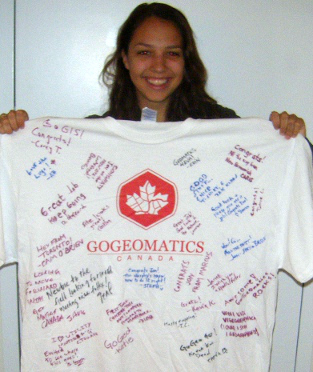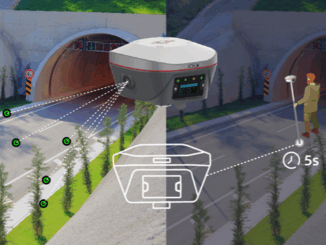Historically, jobs in GIS were few and women in these roles were even fewer. While there are a growing number of women entering the industry, they are still a minority. As recent graduates, two of my fellow graduates and I share our experience as being women in the GIS profession.
Colleen is an environmental scientist at a private engineering firm. She is one of two women in her department of six. Amelia, a GIS technician for Agriculture Canada, is one of two in a department of 14. As for myself, I’m the sole GIS technician at Environment Canada for my project, but I am not alone—the head of GIS technical support and many members of the team are women.
Today’s employees, especially those just starting their first careers like us, are looking for mentors and role models in the industry who have faced our challenges and succeeded. We want to see that our passion can actually be the job we envisioned when we started our program. Looking around, it is inspiring and encouraging to find women in technical and managerial positions who can help us reach their level. However, as in other science, technology, engineering and math (STEM) industries, GIS struggles in encouraging and enrolling women into academic program. Our 2012 graduating class, for example, only had 6 women among the 18 students. While this is a good proportion, why are more women not enrolling?
Geography is integrated into the humanities in elementary and secondary school, but GIS as a subject is often not introduced until post-secondary school. Despite its application to a variety of industries, the importance of GIS is not encountered until university, college, or when searching for jobs. This late introduction prevents many from considering it as a potential path, however this does not explain the uneven enrollment. GIS technicians come from a variety of STEM backgrounds and, due to what should be outdated stereotypes, many women still shy away from as they perceive them to be male dominated. Subsequently, they believe they will be discouraged from excelling and talked down to by their male colleagues.
Interestingly, this is not the case. None of us experienced any resistance entering the field and our male colleagues treat us like equals. In fact, even the women who have been in the industry for longer than us say the same thing. The GIS industry is welcoming to women and having more women in higher-level positions will surely inspire others to join the field. The root problem lays not in gender, but rather the way in which GIS and its pre-requisites are promoted within the education system. Let’s not forget that we are part of a relatively new industry that is rapidly growing and evolving. It takes time for curriculums and academic institutions to catch on, but once they do we are sure to see more female applicants and more women in GIS jobs.
To conclude we wanted to give some advice for women who might be interested in entering GIS. GIS is a women-friendly industry and it is an exciting one that is constantly advancing. If possible, find someone who can be your mentor and coach. The first year or two in any role can be challenging, especially in an industry like ours where you need to have a wide array of knowledge. Having someone who can help you will improve your chance for success. We cannot stress the importance of continuously challenging yourself and keeping up on current trends as much as possible. I often find myself wishing I had a stronger graphic design background, while others may wish for stronger programming skills or more knowledge of specialized programs. Given the still rather limited number of positions available and the number of candidates to fill them, competition is high. Having additional knowledge and staying fresh is key in separating yourself from the pack. Finally, if paid jobs are not available, internships or volunteer positions are a great way to gain experience and many have the potential to turn into paid careers.
Lindsay is a GIS analyst with a BA in Geography from the University of Ottawa and a Graduate Certificate from Algonquin College. When she is not making or looking at maps she enjoys snowboarding, baking, and traveling.





Be the first to comment